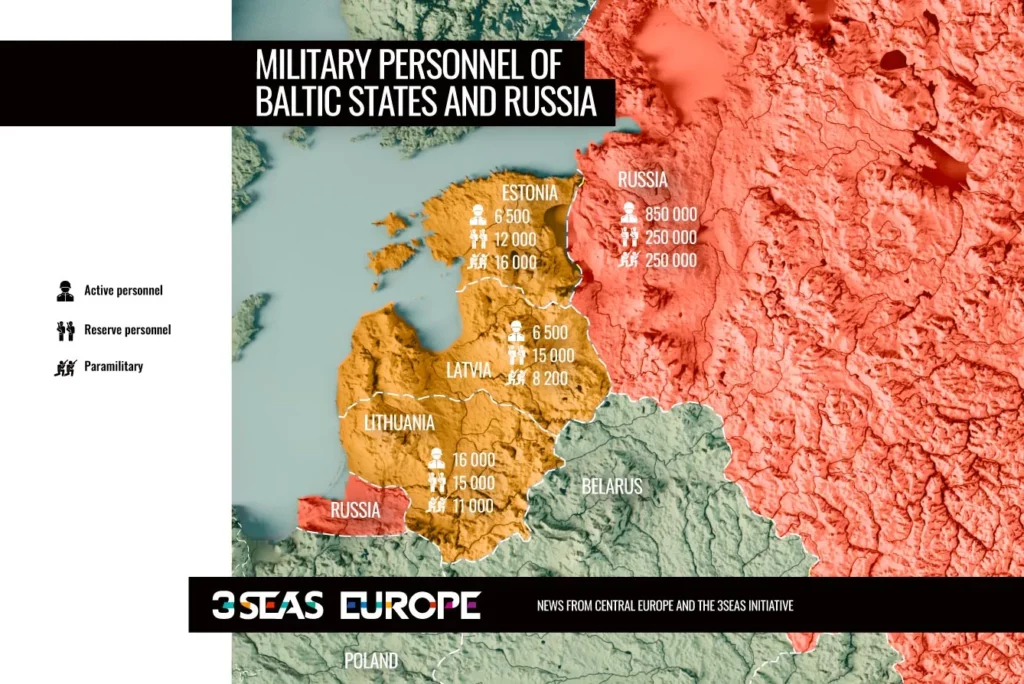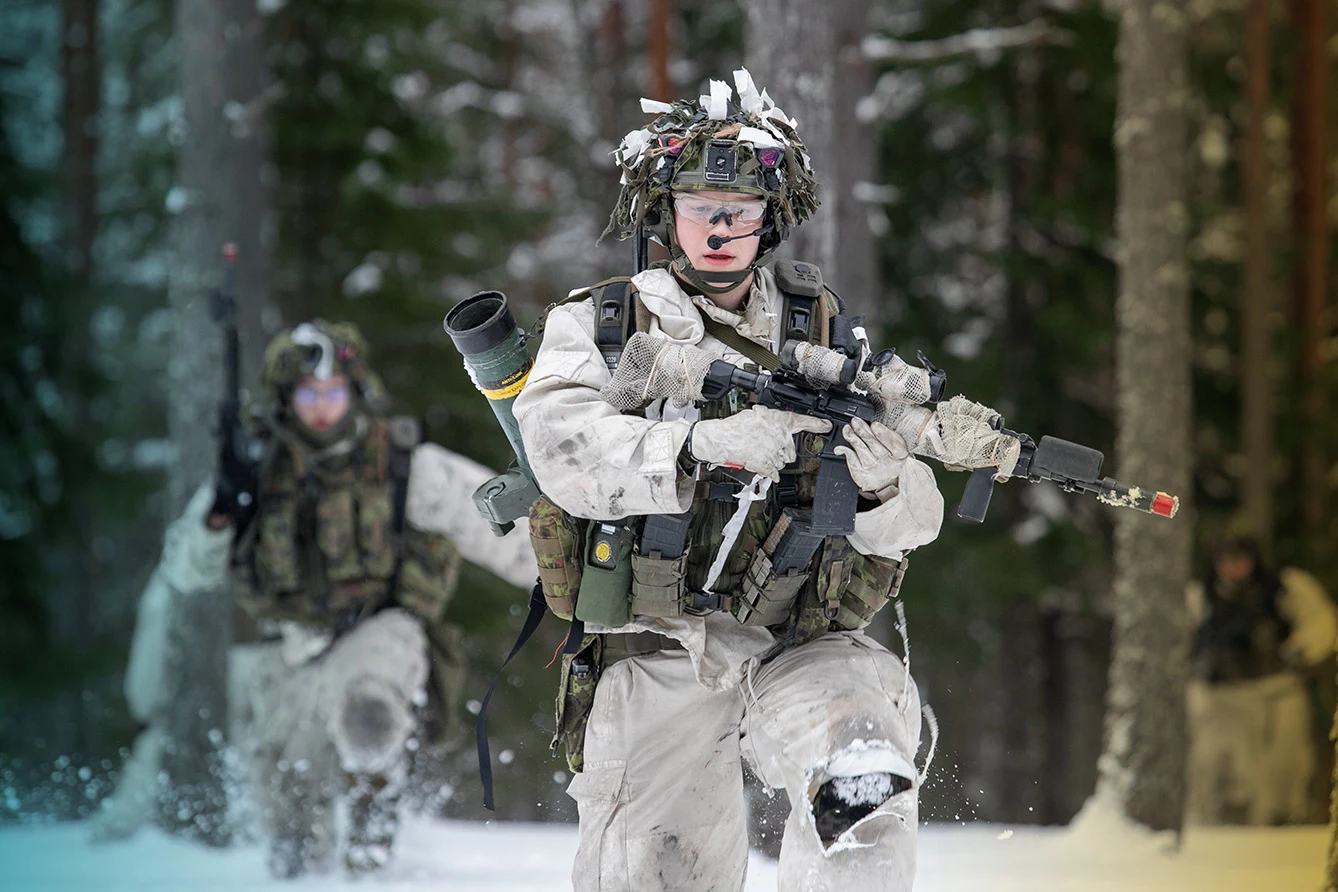Not only are they neighbors with Russia – a powerful state that does not hesitate to use military aggression as a tool of international policy, but Lithuania, Latvia, and Estonia also have very limited potential – demographically, economically, and territorially. Demographics play a huge role in a country’s ability to call up reserves that actually win wars. Russia has a population of 144 million. The Baltic states have about 6 million combined. This is a colossal disparity.
One issue is the small area these states occupy, limiting the strategic depth and leaving no room for allied forces to maneuver or set up a multilayered defense. Also, it guarantees full exposure to artillery fire from Russian territory, even without the incursion of its troops. Small economies of Baltic States allow only for very limited development of military branches like air force or navy.
The Baltic States’ armies in numbers
According to globalfirepower.com, in 2022 the Lithuanian Armed Forces (Lietuvos ginkluotosios pajėgos) reintroduced partial conscription in 2015 and have about 16,000 professional soldiers, 15,000 active reservists, and about 11,000 volunteers contributing to territorial defense.
The Latvian National Armed Forces (Latvijas Nacionālie bruņotie spēki) has a mere 6500 professional soldiers, 15,000 active reservists, and over 8,200 National Guard soldiers.
The Estonian Armed Forces (Eesti kaitsejõud) has 6500 soldiers, of which less than half are conscripts and 12,000 active reservists. The territorial defense has about 16,000 members.

Even adding mobilization capabilities and symbolic numbers of mechanized forces, air force, and navy, it is undeniable that numbers do not speak in favor of the Baltic States in case of a clash. To remedy this, even before the Russian invasion of Ukraine, the Baltic States have implemented plans to increase the size of their armed forces as well as their defense spending.
When it comes to defense spending, the Baltic States are a model for other NATO members. A stable 2% of GDP allocated annually to armaments has long been achieved in each of the countries:
Lithuania has so far allocated USD 1.140 bln or 2.05% of GDP. After the Russian invasion of Ukraine, the Lithuanian government decided to raise the expenditure to 2.5% of GDP by the end of 2022, with an additional USD 316 mln. There is even talk of increasing it to 3% of GDP.
Latvia currently spends around USD 850 mln on defense, which is 2.3% of GDP. Spending is set to increase to 2.5% of GDP with an additional USD 368 mln by the year 2025.
Estonia’s defense spending is similar to Latvia’s, totaling USD 700 mln and 2.2% of GDP. They are planned to increase that to 2.5% of GDP by the year 2025 also, with an additional USD 523 mln the majority of which is for buying short- to mid-range air defense systems.
Baltic countries in NATO. Is this spending enough?
Not really, but no one expects the Baltic States to repel a possible attack on their own. NATO’s doctrine requires the Baltic States to delay enemy advance and give time for Allied forces to provide support. Due to the limitations mentioned above, Lithuania, Latvia, and Estonia are investing heavily in their asymmetric capabilities at the expense of much more expensive symmetric capabilities. This means strengthening light infantry with more mobile anti-tank and anti-aircraft weaponry. It also means increasing competence in irregular warfare, which has, for example, proved useful in the first phase of fighting in Ukraine (although the main burden there still rested with regular armored-mechanized troops).
Such actions are absolutely in line with NATO doctrine, which is the main and most important element in the defense of Lithuania, Latvia, and Estonia. The Alliance’s will to defend the Baltic States manifests itself in rotational but continuously strengthened forward presence of NATO land-based forces and, what’s even more important, the Baltic Air Policing patrol operation conducted since 2004 as part of the NATO Rapid Response Force.
Although the defense of the Baltic states may be problematic due to the factors mentioned above, Russia is outnumbered and outgunned by NATO. But let us just hope that it never comes to the point where we have to test the validity of this doctrine in practice.







